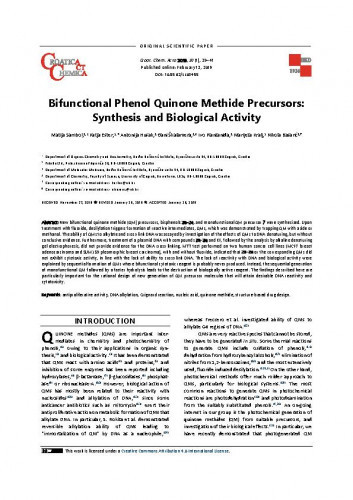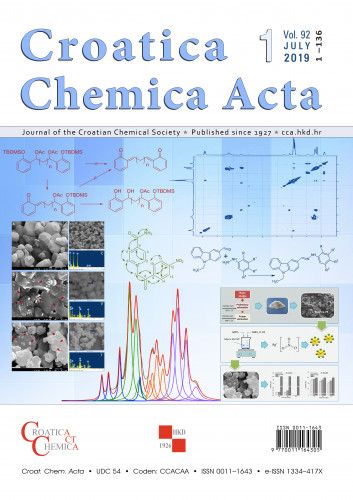New bifunctional quinone methide (QM) precursors, bisphenols 2a–2e, and monofunctional QM precursor 7 were synthesized. Upon treatment with fluoride, desilylation triggers formation of reactive intermediates, QMs, which was demonstrated by trapping QM with azide or methanol. The ability of QMs to alkylate and cross-link DNA was assayed by investigation of the effects of QMs to DNA denaturing, but without conclusive evidence. Furthermore, treatment of a plasmid DNA with compounds 2a–2e and KF, followed by the analysis by alkaline denaturing gel electrophoresis, did not provide evidence for the DNA cross-linking. MTT test performed on two human cancer cell lines (MCF7 breast adenocarcinoma and SUM159 pleomorphic breast carcinoma), with and without fluoride, indicated that 2a–2e or the corresponding QMs did not exhibit cytotoxic activity, in line with the lack of ability to cross-link DNA. The lack of reactivity with DNA and biological activity were explained by sequential formation of QMs where bifunctional cytotoxic reagent is probably never produced. Instead, the sequential generation of monofunctional QM followed by a faster hydrolysis leads to the destruction of biologically active reagent. The findings described here are particularly important for the rational design of new generation of QM precursor molecules that will attain desirable DNA reactivity and cytotoxicity.
Sažetak

 Croatica chemica acta : 92,1(2019) / editor-in-chief Olga Kronja.
Croatica chemica acta : 92,1(2019) / editor-in-chief Olga Kronja.